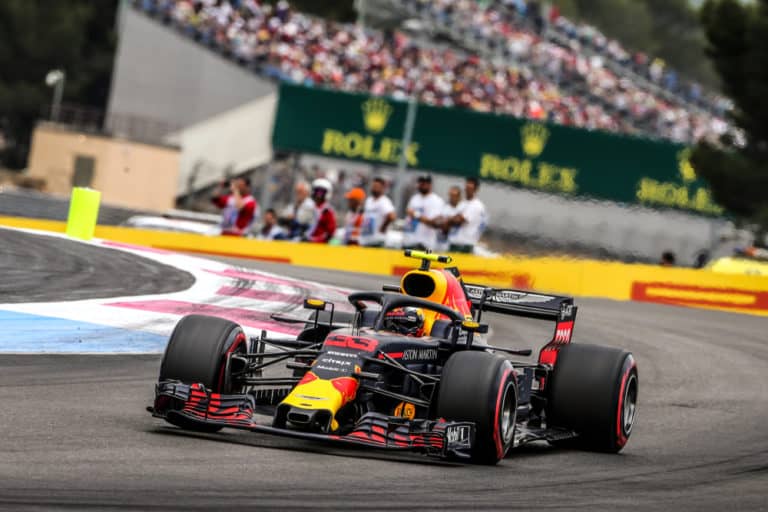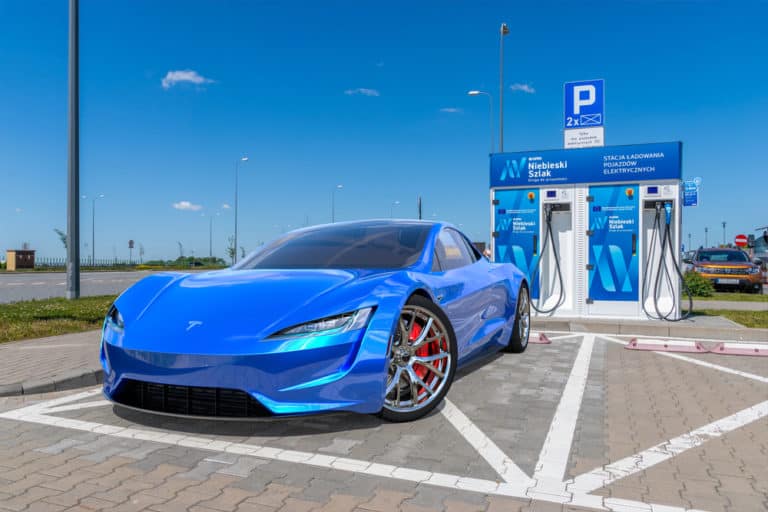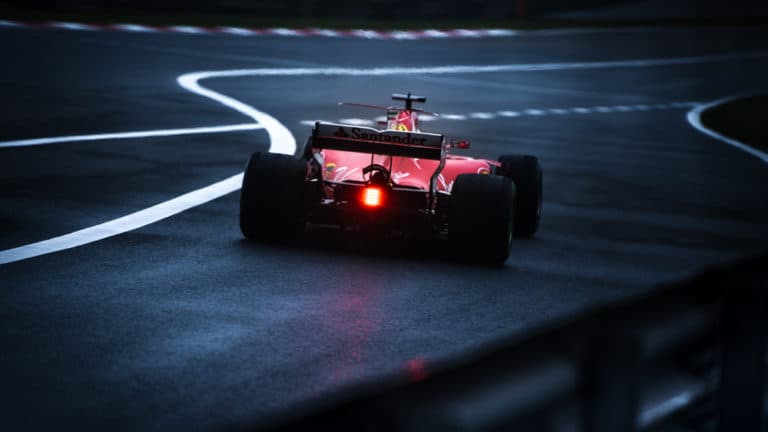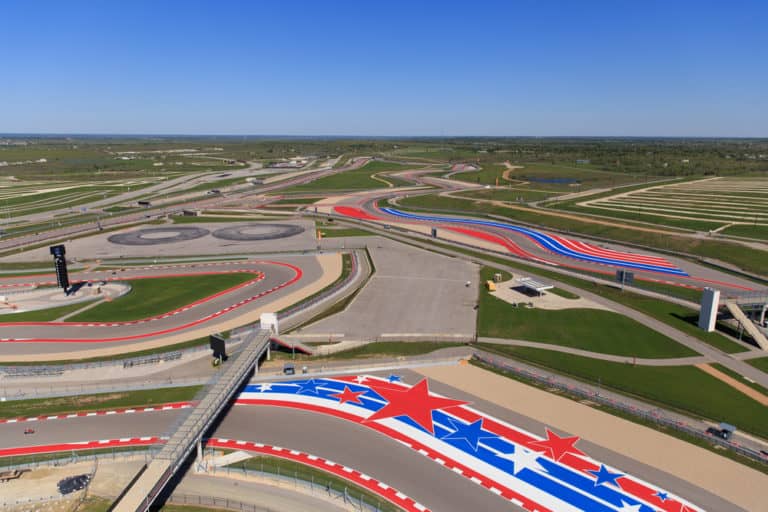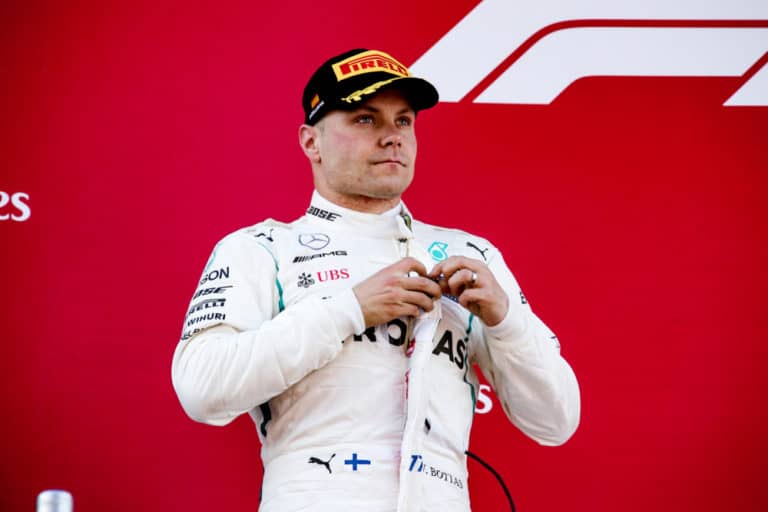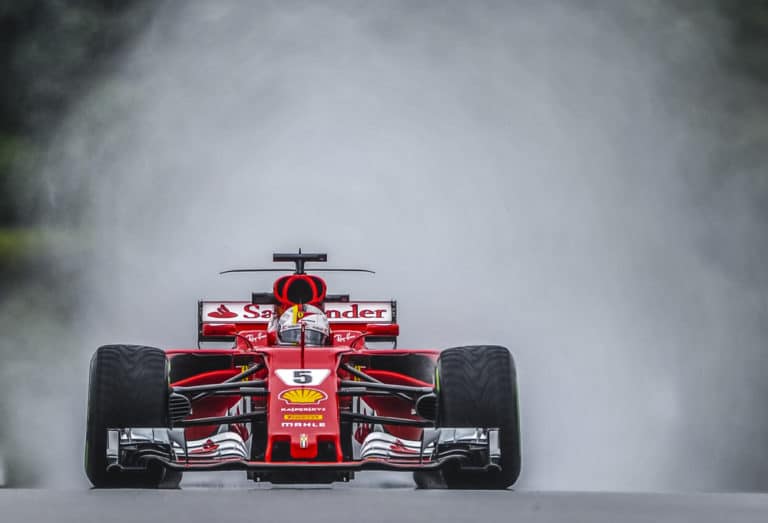As any Formula One fan can tell you, one of the most exciting (and controversial!) elements to start any season is seeing which circuits will make the F1 calendar. So I thought I’d make a list ranking all 22 circuits for the current 2021 season.
The following ranking of the current season of Formula One Grand Prixs will begin from “worst” to “best.” This ranking includes the canceled Grand Prixs earlier in the season and the five remaining Grand Prixs still to be held at the time of writing (19 November 2021).
The criteria for the rankings is a holistic one and will take into consideration:
- The history and prestige of the Grand Prix,
- The location of the Grand Prix and what it offers visitors,
- The atmosphere of the crowd over a race weekend, and
- The excitement offered by the track design for modern Formula One vehicles.
If you’re looking for some F1 merchandise, check out the awesome stuff at the official F1 store here.
No. 22: Sochi Autodrom
The Russian Grand Prix is held at Sochi Autodrom, a circuit built around the Olympic park in what is deemed to be Russia’s resort city and is one of the few subtropical areas in Russia.
Despite the popularity of Sochi as a tourist destination, many fans feel the flat track, smooth asphalt, and largely characterless circuit add little to the way of exciting races.
With the short straights and 90 degree turns resulting in largely uneventful races with minimal overtaking.
That being said, as one of the youngest circuits of the current Formula One season, there may still be time for both further track development and history to unfold!
No. 21: Circuit De Barcelona-Catalunya
The Spanish Grand Prix is held at Circuit De Barcelona-Catalunya in one of Spain’s most vibrant and well-known cities, Barcelona.
The circuit has played host to many memorable moments, including but not limited to:
- Michael Schumacher’s first win for Ferrari in 1996,
- Fernando Alonso becoming the first Spanish Formula One driver to win in Spain in 2006, and
- Max Verstappen becoming the youngest driver to win a Formula One Grand Prix race in 2016.
Despite its history, the circuit’s use in testing has led to an overfamiliarity with the track, resulting in predictable races.
Given Spain’s popularity with motorsport, a Spanish Grand Prix will always be a highlight on the calendar, but perhaps a temporary venue change may be in order.
No. 20: Albert Park Circuit
Coming to the first street circuit of the list, the Australian Grand Prix is held at Albert Park Circuit in Melbourne. The track itself consists of public sections of road that circle the titular Albert Park Lake.
The excitement around the race weekend at Albert Park is mainly because the Australian Grand Prixs is usually one of the opening races of the Formula One Season (despite the event’s cancellation in 2021).
That said, the track itself is considered flat, easy, and often void of overtaking, coupled with mediocre seating outside of the grandstand, and it’s evident why the circuit is not higher on the list.
No. 19: Circuit Paul Ricard
The French Grand Prix made its long-awaited return to the Circuit Paul Ricard at Le Castellet, in the South East of France.
Perched on a cliff edge among its 15th-century architecture, Castellet stands as a highlight on the calendar for visitors looking to immerse themselves in classic French grandeur.
Sadly the track itself, sporting its vibrant red, white, and blue colors, doesn’t seek to pay homage to its surroundings, with many spectators feeling it’s worse off for not doing so.
Couple the above with its recent and relatively unsuccessful metamorphosis from a testing track into a racing one. It can be understood why many a fan would support a fresh new coat of paint and track redesign.
No. 18: Hungaroring
Nicknamed “Monaco without the walls,” the Hungarian Grand Prix is held at Hungaroring in the small village of Mogyoród.
The circuit is of historical significance in that it was the first Grand Prix to be held in the USSR in 1986, whereby it has continued to be a mainstay on the Formula One calendar.
While the elevation and winding turns on the track provide an extreme challenge for the drivers and team engineers alike, the modern design of Formula One in conjunction with narrow corners means overtaking has proved harder in recent years.
However, the track conditions and the heat often associated with the track add an extra layer of complexity given the balancing act of grip and tire degradation.
No. 17: Yas Marina Circuit
Yet another Herman Tilke designed circuit, the Abu Dhabi Grand Prix, is held at the Yas Marina Circuit on Yas Island.
The track is notable for having hosted the inaugural day-night race in 2009, whereby floodlights seamlessly illuminated the track from day to night. Every subsequent Formula One race at the track has done so and remains a calendar highlight.
Despite the spectacle and location of the Yas Marina Circuit, the inclusion of more corners on the track for the 2021 season and the lack of history behind every Formula One season’s grand finale results in the track’s low standing.
No. 16: Circuit Gilles Villeneuve
Originally named Île Notre-Dame Circuit, the track was renamed in 1982 in honor of Canadian driver Gilles Villeneuve following his death at the Belgian Grand Prix.
Situated on Notre Dame Island in Montreal, Quebec, the track plays host to the Canadian Grand Prix, with the inaugural Grand Prix at the then Île Notre-Dame Circuit taking place in 1978.
Over its long history, the track has earned a reputation for being exciting and unpredictable.
A notable example coming in 1999 when Damon Hill, Michael Schumacher, and Jacques Villeneuve all crashed on the exit of the final chicane, now dubbed “the wall of champions.”
No. 15: Circuit Zandvoort
After a lengthy hiatus on the calendar, the Dutch Grand Prix returned to Circuit Zandvoort in North Holland.
After extensive renovations in 2020 to allow for the hosting of modern Formula One races, the newly upgraded track proved to be historical, when Max Verstappen won the 2021 Grand Prix, becoming the first Dutch driver to win their home race.
While it remains to be seen if the awe of the track can continue into the 21st century, as it did in yesteryear, there is no doubting the electric atmosphere the Dutch founds are bound to bring if Verstappen continues his upward trajectory in the sport!
No. 14: Autodromo Internazionale Enzo E Dino Ferrari
As the host of one of the Italian Grand Prix, the Autodromo Internazionale Enzo e Dino Ferrari, better known as The Imola Circuit, due to its location in the town of Imola, remains a key location on the Formula One calendar.
Named after Ferrari’s late founder and son, Enzo and Alfredo “Dino” Ferrari, the track pays homage to its namesake, focusing on high octane competition and luxurious surroundings.
While some fear the track is slightly too small for modern Formula One vehicles, this hasn’t stopped drivers from putting in incredible performances, despite its “old school” feel.
No. 13: Bahrain International Circuit
Another one of Hermann Tilke’s designs, the Bahrain Grand Prix, was the first Grand Prix held in the Middle East in 2004.
Located in the desert, this track presents a unique experience for its visitors compared to the usual lush vistas typically associated with Formula One Grand Prixs.
Further adding to the splendor of the oasis in the desert is the inclusion of illuminated night races in 2014, which subsequently became the template for all future Formula One races held at the venue.
Although the inclusion of the “outer loop” layout in 2020 has been met with mixed responses. The strong starts and finishes to races have kept the spectacle alive both on and off the track.
No. 12: Circuit Of The Americas
While the dominant motorsports in the United States of America remain NASCAR and the IndyCar Series, there is no denying the growing popularity of Formula One. This popularity is largely due to the Circuit of the Americas in Austin, Texas.
Nothing illustrates the growing popularity of Formula One in the United States more than the attendance record at the 2021 Grand Prix, where the all-time attendance record for an event was beaten by over 40 000 people, for a total of 400 000 spectators!
The reason is simple: the track, having been co-designed by Hermann Tilke, has some of the best corner combinations of any circuit in the world, most notable being the enormous climb on the first turn and its subsequent bends.
The overtaking opportunities and an electric atmosphere are positive signs that the Circuit Of The Americas may become one of the all-time great tracks in the coming years!
No. 11: Circuit De Monaco
The most famous street race on the Formula One calendar, the Monaco Grand Prix, plays host to arguably the most extravagant circuit in the winding roads of the Monte Carlo neighborhood of Monaco.
In terms of its representation in popular culture, the Monaco Grand Prix could be seen as the face of Formula One in many ways.
This is partly due to Formula One’s reputation as an elite sport that attracts wealthy investors, spectators, and participants; while also fashioning itself as part of the Triple Crown of motorsports (the other two being the Indianapolis 500 and Le Mans).
Unfortunately, despite its prestige, history, world-class location, and Monaco’s production of Formula One drivers, the track itself leaves much to be desired in the modern era.
It is yet to be seen what the future holds for Circuit De Monaco, as redesigning the track is almost impossible. Still, hopefully, changes to car manufacturing will add excitement to this currently stagnant event.
No. 10: Autódromo Hermanos Rodríguez
The Mexican Grand Prix is held at Autódromo Hermanos Rodríguez in Magdalena Mixhuca Sports City, Mexico City.
After extensive renovations to the track in 2015 under Hermann Tilke, the track was approved for Formula One events for the first time in 23 years.
The track’s location within a sporting complex is wholly unique, leading to a design considered part street track, part permanent track, and part baseball stadium.
This eclectic design, while worth the price of admission alone, is further complemented by equally exciting and unconventional races since its grand reopening.
Top this off with passionate crowds cheering on one of the most likable and tough drivers in the form of home favorite Sergio Perez and any visit to the Autódromo Hermanos Rodríguez is bound to leave you buzzing!
No. 9: Autodromo Internacional do Algarve
Commonly known as Portimão due to its proximity to the coastal city of the same name. Autodromo Internacional do Algarve plays host to the Portuguese Grand Prix.
While initially used for pre-season testing during the 2008/2009 season, the chaos brought about in the 2020 season due to Covid regulations meant the track joined the Formula One calendar at short notice.
Similar to The Circuit of the Americas, Portimão offers state-of-the-art for teams and spectators, with the track consisting of similar swooping elevations and descents.
Despite being so new to the calendar, Portimão has become a firm favorite and should, with time, find itself as one of the best events on the Formula One calendar.
No. 8: Baku City Circuit
Beginning life as the European Grand Prix in 2016, before being named the Azerbaijan Grand Prix the following year, the Baku City Circuit has quickly earned a reputation as one of the best street circuits on the Formula One calendar.
While the castle complex offers smooth racing and fantastic scenery for spectators, this track shines in its unorthodox approach to track design, namely long straights followed by hard 90 degree corners.
This unconventional approach has already brought major upsets in its short lifespan, the most recent being the tire blowout for Max Verstappen while leading on the 51st lap and then a subsequent crash by Lewis Hamilton at the restart.
There seems little doubt Baku will not influence track design philosophy in the future.
No. 7: Autodromo Nazionale Monza
As the second Italian Grand Prix of the current Formula One Season, Monza has upheld its legendary status as the “temple of speed” since opening its doors in 1922.
Among the hundreds of legendary incidents at Monza over the years, one notable achievement sticks out, that being the fastest lap ever recorded at a Formula One event.
This honour having been set by Williams driver Juan Pablo Montoya during practice for the 2004 Grand Prix, which illustrates the nature of the track which has been dubbed “La Pista Magica.”
While newer tracks tend to provide more significant challenges and increased likelihoods of overtaking for modern machinery, the longevity and allure of Monza will always remain.
No. 6: Istanbul Park Circuit
The Turkish Grand Prix is held at Istanbul Park Circuit on the boundaries of the Pendik and Tuzla districts, surrounded by lush forests and fields.
Designed by Hilman Tilke, former Formula One Chief Executive Bernie Eccelstone described the track as “the best in the world” during his tenure as holder of the managing rights between 2007 and 2011.
Despite a hiatus from 2011 to 2020, the track’s return has been met with excitement and trepidation by drivers and fans alike.
The reason being is that while the track provides plenty of opportunity for good racing, its flowing and challenging race lines provide nerve-wracking to all but the sturdiest of racers.
No. 5: Red Bull Ring
The Austrian Grand Prix has taken place at the same circuit in Spielberg; however, the track has been subject to three different names: Österreichring, A1-Ring, and now the Red Bull Ring.
Set in the valley of the Styrian Mountains, this shorter circuit would be seen to live up to the moniker of dynamite coming in small packages.
It achieves this by using its natural elevation to its advantage while combining this feature with long straights and sharp breaking. All of these elements were designed to complement modern machinery.
Undoubtedly, this cauldron will continue to boil over, along with Redbull’s continued success in the sport.
No. 4: Autódromo José Carlos Pace
The Brazilian Grand Prix is hosted at the Autódromo José Carlos Pace, commonly referred to as Interlagos, in reference to the neighborhood it finds itself in, in the city of São Paulo.
As the home of Brazilian Formula One, it is no surprise that Brazilian drivers have had success at Interlagos, most notable being consecutive wins in 1973 and 1974 for Emerson Fittipaldi, and a follow-up victory by fellow Americans Brazilian Carlos Pace in 1975.
With a carnival atmosphere and an equally bumpy, chaotic, and exciting track to compliment one of the most vibrant cities in the world, Interlagos is a must-visit for any Formula One fan.
No. 3: Silverstone Circuit
Finishing third on the podium for best Grand Prix to attend is the Silverstone Circuit, named after the nearby Silverstone, England.
Not only is Silverstone the home of English Formula One, but it was also the first circuit to host a Grand Prix for the inaugural Formula One World Championship on the 13th of May 1950.
Outside of its illustrious history and prestige, the track itself is has retained its nature despite numerous changes over the years. The character of Silverstone is speed coupled with challenging corners such as Maggotts, Becketts, and Abbey.
Given the pedigree of English drivers on the Formula One circuit in the form of George Russel, Lando Norris, and seven-time world champion Lewis Hamilton, there’s no doubt Silverstone will continue to be one of the most famous circuits on the calendar.
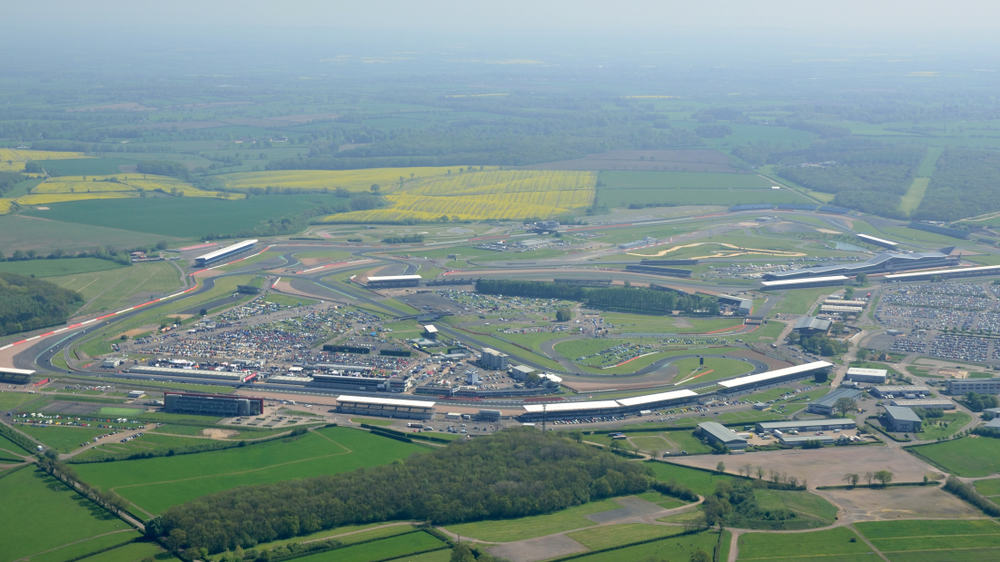
No. 2: Suzuka International Racing Course
In the runner-up position is Suzuka International Racing Course, commonly known as the Suzuka Circuit, host of the Japanese Grand Prix in Suzuka City.
While established in 1962 as a test track for Honda, a series of upgrades saw it host its first Formula One Grand Prix in 1987.
Despite being a newcomer to the circuit compared to its competition, the Suzuka circuit has firmly placed itself among the upper echelon of Formula One circuits.
The primary reason for Suzuka’s success can be attributed to its flowing race lines, which create ample opportunities for overtaking and to allow modern machinery to push their cars to the limit.
Throw in a couple of world-class grandstands overlooking some white knuckle cornering such as the 130R and some snaking “S” Curves, and you have one of the best spectator events in all of motorsport.
No. 1: Circuit De Spa-Francorchamps
Standing atop the podium, spraying champagne and draped in an evergreen wreath is the Belgium Grand Prix held at Circuit De Spa-Francorchamps.
Frequently referred to as Spa (despite not being situated in the city of Spa), this track has remained the pinnacle of Formula One since its maiden championship back in 1950.
As has been so often with this list, Spa manages to capture the old feel of legendary tracks while also being designed and upgraded in such a way to accommodate modern machinery perfectly.
Through the rolling hills and forests of the Ardennes region, Spa illustrates the tranquillity of European nature at its best while still providing thrills, after all these years, for modern drivers through complexes such as the Eau Rouge/Raidillon.
Equal parts beautiful, ferocious, legendary, and with so much promise still to come with the advent of new technology, Spa is Formula One at its finest.
Conclusion
The level of professionalism and pedigree of racing on display at every Formula One Grand Prix means that making a list of “worst” to “best” is relative, as all Formula One Grand Prixs exhibit world class entertainment and hospitality.
That being said, there is a need to constantly evaluate track designs in the modern era of racing and expand venue locations to increase the sport’s global reach.
These need to be considered to guarantee that all circuits remain up to the standard expected of teams, drivers, and fans alike.
References
- https://www.telegraph.co.uk/formula-1/0/best-f1-track-ranking-2021-season-worst-circuit-verdict/
- https://www.whichcar.com.au/opinion/every-current-formula-1-track-ranked
- https://bleacherreport.com/articles/1958704-ranking-the-top-25-circuits-in-the-history-of-formula-1
- https://www.redbull.com/int-en/redbullracing/7-things-about-the-russian-gp
- https://en.wikipedia.org/wiki/Russian_Grand_Prix
- https://en.wikipedia.org/wiki/Circuit_de_Barcelona-Catalunya
- https://en.wikipedia.org/wiki/Albert_Park_Circuit
- https://www.formula1.com/en/information.australia-melbourne-grand-prix-circuit.4LZLnnP4nXDFVVD01EdvvG.html
- https://www.formula1.com/en/information.france-circuit-paul-ricard-le-castellet.2puNt6JNpM6cVBD7YpbTZt.html
- https://en.wikipedia.org/wiki/Circuit_Paul_Ricard
- https://www.formula1.com/en/latest/article.hungary-preview-quotes-the-teams-and-drivers-on-hungaroring.5hCMWm3WDY6wsmAuy2gSM6.html
- https://en.wikipedia.org/wiki/Hungaroring
- https://en.wikipedia.org/wiki/Abu_Dhabi_Grand_Prix
- https://en.wikipedia.org/wiki/2021_Dutch_Grand_Prix
- https://en.wikipedia.org/wiki/Imola_Circuit
- https://en.wikipedia.org/wiki/Bahrain_International_Circuit
- https://en.wikipedia.org/wiki/Circuit_of_the_Americas
- https://www.espn.com/f1/story/_/id/32471853/official-f1-cracked-america-just-beginning
- https://www.topendsports.com/events/motorsports/triple-crown.htm
- https://en.wikipedia.org/wiki/Monaco_Grand_Prix#cite_note-why_not-60
- https://en.wikipedia.org/wiki/Aut%C3%B3dromo_Hermanos_Rodr%C3%ADguez
- https://www.formula1.com/en/racing/2021/Portugal/Circuit.html
- https://en.wikipedia.org/wiki/Algarve_International_Circuit
- https://en.wikipedia.org/wiki/2021_Azerbaijan_Grand_Prix
- https://www.formula1.com/en/information.azerbaijan-baku-city-circuit-baku.5KEzWNQG1x2nLSpfg5xBZh.html
- https://www.formula1.com/en/information.italy-autodromo-nazionale-monza.FiJN1jnQlRLeHqOxIt13m.html
- https://en.wikipedia.org/wiki/Monza_Circuit
- https://en.wikipedia.org/wiki/Istanbul_Park
- https://en.wikipedia.org/wiki/Red_Bull_Ring
- https://www.formula1.com/en/information.austria-red-bull-ring-spielberg.1s7EC2bGta7o1thZkVPbbq.html
- https://en.wikipedia.org/wiki/Interlagos_Circuit
- https://www.formula1.com/en/information.brazil-autodromo-jose-carlos-pace-sao-paulo.5z2RfrmiTTfEP6Wnxv1yIW.html
- https://en.wikipedia.org/wiki/Silverstone_Circuit
- https://www.formula1.com/en/information.great-britain-silverstone-circuit.2DtFVI1FjkYgLVdGhbAIv0.html
- https://en.wikipedia.org/wiki/Suzuka_International_Racing_Course
- https://www.formula1.com/en/information.japan-suzuka-international-racing-course.2XjOiKgIHRRBVVpp5N3S5t.html
- https://www.formula1.com/en/information.belgium-circuit-de-spa-francorchamps.3LltuYaAXVRU8iezEsjzGw.html
- https://en.wikipedia.org/wiki/Circuit_de_Spa-Francorchamps

